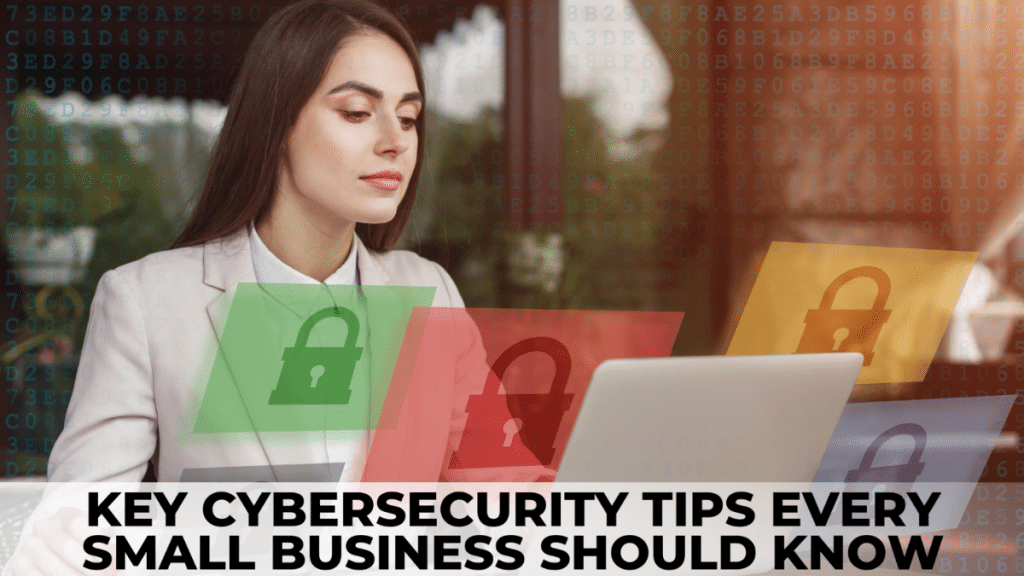Small companies nowadays are exposed to a growing number of cyber threats that exist in today’s environment. For example, ransomware attacks and data breaches are common and can have severe consequences. However, using the right knowledge and tools, one can easily deter such moves. Small structures always face the problem of inadequate capital, making it crucial to implement strong cybersecurity measures.
The Importance of Cybersecurity for Small Businesses
When addressing cybersecurity for small business, it’s important to recognize the specific risks smaller organizations face. These businesses are often targeted due to limited resources for protection, making it crucial to adopt robust security practices. Staying informed through reliable resources is crucial for small businesses looking to enhance cybersecurity. Now, let’s explore essential cybersecurity tips that every small business owner should know and implement.
1. Implement Strong Password Policies
Your first line of defense starts with robust passwords. Enforce these guidelines across your organization:
● Use long, complex passwords (at least 12 characters)
● Combine uppercase and lowercase letters, numbers, and symbols
● Avoid common words or easily guessable information
● Never reuse passwords across multiple accounts
● Implement multi-factor authentication (MFA) wherever possible
Pro Tip: Consider using a reputable password manager to generate and securely store strong, unique passwords for all your accounts.
2. Keep Software and Systems Updated

Hackers thrive when a company fails to update its software regularly. To remain safe, one should always turn on automatic update for OS and application whenever it is possible. Periodically, scanNetwork devices for updates that fix security flaws that are rampant in firmware for the devices. Ending the use of legacy systems which are not updated with the latest security patches is important since hackers can gain easy access. Ensure to create a proper list that you should regularly take stock of all the software and hardware that is in your possession so that you do not leave out some important assets.
3. Educate Your Employees
Your team can be considered as your strength and weakness at the same time. Promote performing cybersecurity training as often as possible as this will help in the establishment of a human firewall. They also used phishing simulations to enhance awareness in its personnel since it is one of the secure ways. Make sure workers are familiar with social engineering schemes, which are becoming more complex. Promulgate policies for the management of sensitive information and foster security awareness across your entire corporate entity.
4. Backup Your Data Religiously
Data loss can cripple your business. Implement a robust backup strategy:
● Follow the 3-2-1 rule: 3 copies, 2 different media types, 1 off-site
● Automate your backups to ensure consistency
● Regularly test your backups to ensure they’re working properly
● Store backups securely, preferably encrypted
5. Secure Your Network
Your network is the highway for your data – keep it protected. Start by using a firewall to monitor and control incoming and outgoing traffic. Segment your network to limit access to sensitive areas, reducing the potential impact of a breach. Always encrypt your Wi-Fi networks and disable WPS to prevent unauthorized access. Make it a habit to regularly scan for vulnerabilities and address them promptly to maintain a robust defense.
6. Implement Access Controls
Not everyone needs access to everything. Tighten your security with proper access management by employing the principle of least privilege. Use role-based access control (RBAC) to ensure employees only have access to the resources necessary for their job functions. Regularly audit and update user access rights to maintain security as roles change. Most importantly, immediately revoke access for departing employees to prevent potential data leaks or unauthorized access.
7. Develop an Incident Response Plan
Hope for the best, but prepare for the worst. Have a plan in place:
● Define roles and responsibilities for your response team
● Establish clear procedures for identifying and containing breaches
● Create communication templates for various scenarios
● Regularly test and update your incident response plan
8. Encrypt Sensitive Data
Encryption on your important data offers an added security feature in ensuring that your information is safe. Encrypt hard drives for all devices to ensure protection of data that is stored on the devices. Implement SSL/TLS protocols in order to minimize risks associated with data transmission so that information is safe while moving through networks. It is also prudent to warrant that all sensitive emails sent or received be encrypted in order to avoid cases of interception. And also for those employees who may work from home, a virtual private network is an added security measure.
9. Monitor Your Systems
Be safe, be careful and monitor your networks. Use Intrusion Detection System/Intrusion Prevention System (IDS/IPS) to detect and keep and handle possible threats as they are launched. Employ SIEM systems to collate and analyse the security data coming from the different parts of your network. Use triggers for related to evil-doers and other activities or events as well as always ensure that the logs are reviewed properly and any issues that arise are looked into.
10. Vet Your Vendors
Your security is only as strong as your weakest link. Assess third-party risks by conducting thorough due diligence on potential vendors before engagement. Include specific security requirements in contracts to ensure alignment with your standards. Regularly audit vendor compliance with these security standards to maintain a strong defense. Limit vendor access to only necessary systems and data, reducing the potential impact of a breach through a third party.
Comparison Table: In-House vs. Outsourced Cybersecurity
To help you decide on the best approach for your business, consider this comparison:
Aspect | In-House Cybersecurity | Outsourced Cybersecurity |
Cost | Higher upfront investment | Predictable monthly expenses |
Expertise | Limited to internal team skills | Access to diverse specialist knowledge |
Scalability | May struggle with rapid growth | Easily scalable to business needs |
Response Time | Potentially faster for on-site issues | 24/7 monitoring and rapid response |
Control | Full control over security infrastructure | Reliance on provider’s systems |
Integration | Seamless integration with business processes | May require adaptation to provider’s methods |
11. Protect Mobile Devices
In our increasingly mobile world, don’t forget about smartphone and tablet security. Require strong passcodes or biometric authentication on all devices accessing company data. Enable remote wiping capabilities to protect sensitive information if a device is lost or stolen. Install mobile device management (MDM) solutions to maintain control over company-owned devices. Restrict app installations to trusted sources only to minimize the risk of malware.
12. Stay Informed About Emerging Threats
The ever changing paradigms makes cybersecurity an essential field to know about. Follow the leading cybersecurity newsletters and alerts so as to be on the lookout for threats and openings. Attend industry forums and conferences so as to get to know other professionals and promote exchange of information. Subscribe to reliable security blog and cybersecurity experts on different platforms to have up-to-date information and news. Therefore, consider participating in the Information Sharing and Analysis Center (ISAC) of your industry to leverage on what other members are doing.
By implementing these key cybersecurity tips, small businesses can significantly reduce their risk of falling victim to cyber attacks. Remember, cybersecurity is an ongoing process, not a one-time fix. Regularly review and update your security measures to stay ahead of evolving threats.
Conclusion
Cybersecurity is no longer optional for small businesses – it’s a necessity. Following these simple strategies will in turn hugely improve your organization’s security against cyber threats. The important thing to realise is that you don’t want to try and have complete security because this is impossible but the idea is to make your business a less attractive target to these cyber criminals.
Perform a security assessment of your current state of affairs in terms of technologies and procedures. Enlarge these risks and sort them according to their priority and likelihood so that you can create a current and urgent action plan. Given that prevention costs are considerably lower than the damages that cybercrime can inflict, now is the time to get serious about security.
Frequently Asked Questions
How much should a small business budget for cybersecurity?
While there’s no one-size-fits-all answer, experts recommend allocating 3-5% of your overall IT budget to cybersecurity. This can vary based on your industry, risk profile, and regulatory requirements. Start with a risk assessment to identify your most critical assets and prioritize your spending accordingly.
What’s the first step I should take to improve my small business’s cybersecurity?
Begin with a comprehensive security audit to identify your current vulnerabilities. This will help you prioritize your efforts and investments. If you lack in-house expertise, consider hiring a cybersecurity consultant to guide you through this process and develop a tailored security roadmap.
How can I protect my business from ransomware attacks?
Ransomware protection requires a multi-layered approach. Keep all systems and software up-to-date and implement robust backup and recovery processes. Use email filtering and anti-malware solutions to catch threats before they reach your network. Train employees to recognize phishing attempts, as these are often the entry point for ransomware. Segment your network to limit the spread of potential infections, and consider cyber insurance to mitigate financial risks.

